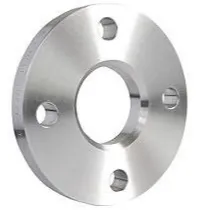-
Cangzhou Yulong Steel Co., Ltd.
-
Phone:
+86 13303177267 -
Email:
admin@ylsteelfittings.com
- English
- Arabic
- Italian
- Spanish
- Portuguese
- German
- kazakh
- Persian
- Greek
- French
- Russian
- Polish
- Thai
- Indonesian
- Vietnamese
- Zulu
- Korean
- Uzbek
- Hindi
- Serbian
- Malay
- Ukrainian
- Gujarati
- Haitian Creole
- hausa
- hawaiian
- Hebrew
- Miao
- Hungarian
- Icelandic
- igbo
- irish
- Japanese
- Javanese
- Kannada
- Khmer
- Rwandese
- Afrikaans
- Albanian
- Amharic
- Armenian
- Azerbaijani
- Basque
- Belarusian
- Bengali
- Bosnian
- Bulgarian
- Catalan
- Cebuano
- China
- China (Taiwan)
- Corsican
- Croatian
- Czech
- Danish
- Esperanto
- Estonian
- Finnish
- Frisian
- Galician
- Georgian
- Kurdish
- Kyrgyz
- Lao
- Latin
- Latvian
- Lithuanian
- Luxembourgish
- Macedonian
- Malgashi
- Malayalam
- Maltese
- Maori
- Marathi
- Mongolian
- Myanmar
- Nepali
- Norwegian
- Norwegian
- Occitan
- Pashto
- Dutch
- Punjabi
- Romanian
- Samoan
- Scottish Gaelic
- Sesotho
- Shona
- Sindhi
- Sinhala
- Slovak
- Slovenian
- Somali
- Sundanese
- Swahili
- Swedish
- Tagalog
- Tajik
- Tamil
- Tatar
- Telugu
- Turkish
- Turkmen
- Urdu
- Uighur
- Welsh
- Bantu
- Yiddish
- Yoruba

Dec . 04, 2024 15:55 Back to list
1% 2% 90 Degree Elbow Specifications for Plumbing and Piping Systems
Understanding the Importance of a 90-Degree Elbow in Pipe Systems
In the world of engineering and construction, particularly regarding fluid transportation, fixtures and fittings play crucial roles in the efficiency and effectiveness of systems. Among these fittings, the 90-degree elbow stands out as an essential component, often underestimated in its significance. This article delves into the importance of 90-degree elbows, highlighting their applications, benefits, and considerations when using them in various piping systems.
What is a 90-Degree Elbow?
A 90-degree elbow, often referred to simply as a 90 elbow, is a pipe fitting that enables a change in the direction of flow by 90 degrees. It is commonly available in various materials, including PVC, steel, copper, and brass, and can suit different applications, ranging from residential plumbing to extensive industrial systems. The elbow's primary purpose is to facilitate the smooth transition of fluid flow while minimizing turbulence and resistance.
Applications of 90-Degree Elbows
90-degree elbows find applications across various sectors, including
2. HVAC Systems In heating, ventilation, and air conditioning systems, these elbows help redirect airflow through ducts, ensuring efficient air distribution within buildings.
3. Industrial Piping In factories and manufacturing plants, 90-degree elbows are frequently used in extensive piping layouts to transport fluids and gases between different processing units.
4. Irrigation Systems In agricultural applications, these fittings enable the irrigation systems to change direction, directing water flow benefitting crop cultivation.
Benefits of Using 90-Degree Elbows
Utilizing 90-degree elbows in piping systems offers several significant benefits
1 2 90 degree elbow

1. Space Optimization The compact design of a 90-degree elbow allows for efficient use of space, making it easier to fit systems into tight or complex areas. This is particularly valuable in urban environments where space is limited.
2. Reduced Pressure Drop Compared to other methods of changing direction in a pipe, such as utilizing sharp bends or multiple fittings, 90-degree elbows provide a smoother transition that reduces pressure drop. This characteristic helps maintain the optimal flow of fluids, which is essential for system efficiency.
3. Enhanced System Longevity Properly installed 90-degree elbows can significantly reduce wear and tear on the piping system. By minimizing turbulence, these fittings help prevent erosion and prolong the life of both the pipes and the system as a whole.
4. Versatility and Customization Available in a range of materials, sizes, and designs, 90-degree elbows can be customized for specific applications, ensuring that they meet the unique needs of a given project.
Considerations When Using 90-Degree Elbows
While the advantages of 90-degree elbows are numerous, there are several key considerations to keep in mind
1. Material Compatibility It is vital to select elbow fittings made from materials compatible with the fluids being transported. For example, corrosive substances may require specific materials like stainless steel or specially coated metals.
2. Sizing and Specifications Ensuring the correct size and specifications of the elbow is crucial for optimal performance. This involves matching the elbow's diameter with that of the pipes in the system to prevent bottlenecks.
3. Installation Quality The efficacy of 90-degree elbows can be compromised by poor installation practices. Proper alignment during installation is essential to prevent leaks and maintain the integrity of the piping system.
4. Flow Direction Always ensure that the elbow is installed in the correct direction to maintain the intended flow of fluids, avoiding any potential backflow or pressure issues.
Conclusion
The 90-degree elbow may appear to be a simple component; however, its contributions to the functionality and efficiency of piping systems are invaluable. By understanding their applications, benefits, and considerations, engineers and contractors can make informed decisions that enhance the performance of fluid transportation systems. As technology advances and demands for efficient infrastructure continue to grow, the role of fittings like the 90-degree elbow will undoubtedly remain a foundational aspect of modern engineering practices.
Latest news
-
ANSI 150P SS304 SO FLANGE
NewsFeb.14,2025
-
ASTM A333GR6 STEEL PIPE
NewsJan.20,2025
-
ANSI B16.5 WELDING NECK FLANGE
NewsJan.15,2026
-
ANSI B16.5 SLIP-ON FLANGE
NewsApr.19,2024
-
SABS 1123 FLANGE
NewsJan.15,2025
-
DIN86044 PLATE FLANGE
NewsApr.19,2024
-
DIN2527 BLIND FLANGE
NewsApr.12,2024
-
JIS B2311 Butt-Welding Fittings LR/SR 45°/90° /180°Seamless/Weld
NewsApr.23,2024











